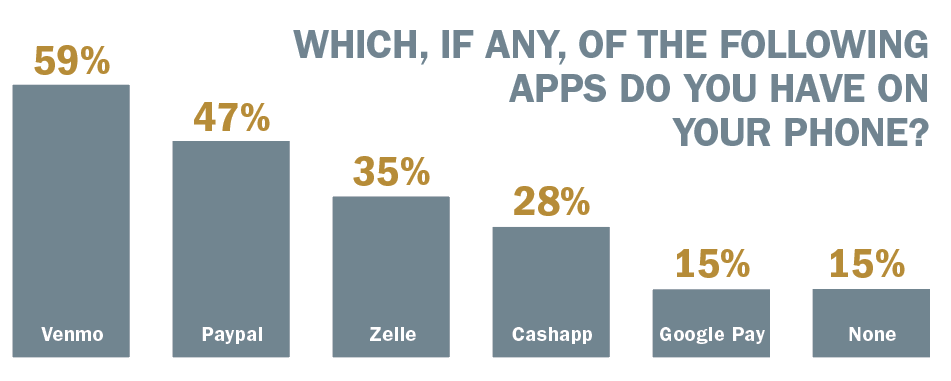By Cynthia Bruce
Whether you are an experienced procurement specialist or you simply have a small lot you want to start generating revenue with, getting the most out of your interactions with a parking technology supplier starts with asking the right questions.
Making sure that you have enough information to even ask those questions in the first place often means putting out a Request for Information (RFI) and letting the responses guide how you will subsequently write a Request for Proposals (RFP). For smaller jobs or where an existing relationship is being leveraged, you may get all the information you need from a Request for Quotations (RFQ).
I will start by briefly summarizing the differences between these types of documents, so you know which is best for you before going on to discuss what to look for in the responses you receive from proponents.
Which RFx is right for you?
RFIs, RFPs, RFQs (and all their ilk) all serve different purposes and become progressively more specific, so which you choose will depend on the information you have and the information you still need.
Questions to consider before making a decision might include some of the following:
- Do you have any existing parking equipment and/or technology? Does it need to be replaced, or are you adding on to your existing solution?
- Are you working with an existing vendor?
- Are you required to go through a formal RFP process?
- Are you unsure of your needs and therefore have general questions?
- Are you asking specific questions because you know exactly what you want?
How you answer these questions will determine how your team seeks out a parking operations contractor.
Request for Information
When you are ready to find a…
By Shreeras Shetty
Parking meters are gaining immense traction in various countries across the globe, owing to the significant surge in traffic congestion by vehicles and surging need for parking meters to manage parking spaces. There has been an expeditious growth in the number of vehicles across the globe, which further drives the demand for parking meters in the coming years. Parking meters are extensively installed in high traffic, commercial, and healthcare places including the hospitals, government institutions, malls & stadium, public parks, and others. Thus, with the COVID-19 restrictions eased-off, more people around the globe are tending to attend various functions, concerts, malls, stadiums, and others. This is expected to drive the demand for parking meters in the coming years.
Moreover, public infrastructures such as libraries, tourist attraction places, transit stations, civic buildings, universities, and others generate an immense parking demand. Hence, parking meter comes out as an effective solution towards reducing the traffic and managing parking spaces. In addition, municipalities are extensively using parking meters particularly for mobility management policies and on-street parking policy regarding the traffic. Persistent technological advancements in parking meters, introduction of creative products, and integration with innovative technologies are expected to provide lucrative opportunities for the growth of the global parking meter market.
Growing prevalence of IoT-based technology that provides solutions while looking for a parking space is remarkably augmenting the installation of pioneering and effective parking management solutions. Further, these factors are expected to provide tremendous opportunities for the growth of the global parking meter market in the upcoming years. According to a report published by Allied Market Research, the global parking meter market is expected to grow expeditiously in the coming years.
Numerous players in the market are devising innovative strategies to add supplementary features in the…
By Melissa Tucci
A parking lot is often your customers’ first and last interaction with your facility and can therefore have a direct and memorable impact on their overall satisfaction with the experience. The parking operation should be clean and safe, and the equipment you use to control access and generate revenue from parking should be functional and appropriate to the task.
Each parking lot has a unique set of conditions that all need to be addressed in designing a solution – not only what types of parkers you want to attract or deter, but what means are at your disposal to finance the operation.
Some items to consider include:
- Capital costs
- Installation costs
- Maintenance costs
- Operational costs
- Projected revenues
- Life expectancy
- Updates and certification versus forklift upgrades
Capital costs
Gated parking systems are more expensive not only because more equipment is required — terminals and barriers at the entrance and exit, pay stations, servers, etc. — but the equipment itself is more complex.
Multi-space meters in ungated parking lots, by contrast, require only the meters themselves, which are usually less expensive to begin with. They can more easily be offered on an all-in rental basis, eliminating the need for capital purchase. As some parking operators upgrade their systems from ungated to gated systems, an increasing number of refurbished multi-space meters are available on the market, providing a unique opportunity for smaller businesses and municipalities to launch a paid parking program using certified equipment.
Installation costs
Installing gated systems requires a great deal of design and engineering. You’ll need to take into consideration how cars will approach and queue at the entrance and exit gates.
The terminals and gates will need to be mounted on concrete islands….
By: Jeffrey Dea, Vice President, Business Development, Toronto Parking Authority
The International Energy Agency reports that, despite a pandemic disrupted and turbulent year, sales of Electric Vehicles (EV) broke all records in 2021, and there is no sign this trend is waning in 2022.
From innovative battery technology to new EV models hitting the roads, there is no question that the stage is set for the EV market to reach its true potential and transform the way we travel. However, Toronto still faces a significant barrier to progress in this market – the lack of a comprehensive and publicly accessible EV charging network.
As adoption takes hold, EV owners will demand a charging network that offers simplicity, speed, choice, and ease of use. Toronto Parking Authority (TPA) is an important ingredient in meeting consumer demand in this regard, and our vision to become the world’s best provider of sustainable parking, bike share, and last-mile mobility experiences, strategically positions us to be a catalyst for EV adoption. We strive to meet our customers’ expectations every day, and we see our role in the transition to EV as an exciting opportunity, but there is no time to spare.
The increase in EV ownership is creating a demand that we need to meet now. In addition, the City of Toronto’s TransformTO Strategy, launched in 2017, calls for a reduction in community-wide greenhouse gas (GHG) emissions in Toronto to net zero by 2040 – 10 years earlier than initially proposed. The strategy establishes 2030 goals that will see 30 percent of all registered vehicles on the road be electric and 75 percent of school/work trips under 5 km either walked, biked, or taken by transit.
Aligned with the global push for sustainability measures, Toronto’s net zero strategy is ambitious, and…
First, A Mobility Wallet is Needed, Then Some Drive.
By Gabe Klein, Partner at Cityfi
Mobility What?
For the past 5 years, I have tried to get anyone that would listen, particularly in the mobility and real estate space to think about the importance of a “mobility wallet.” Back in pre-pandemic 2017, I was working in West Palm Beach on the Downtown Mobility Plan with the city’s Mayor, Assistant City Manager, Head of Transportation, and a slew of great consultants. As we were meeting with the planning department, local developers, the Downtown Development Authority, and others, it became clear that there was a need to productize and simplify the mobility offerings in the city from the County’s transit services (Palm Trans) to the cities Circulator Trolley, the bikeshare system and so forth. The city’s first planned microunit development was also being planned (it did not come to fruition), which spurred the conversation, “Why are we going to build parking spaces that are the same size as the units themselves?” We then realized that changing zoning was (and is) hard but writing new zoning specifically for microunits was very practical and could require an alternative to building parking. But what would that be?
Like a game of telephone, I now realize that there are many variations of what a “mobility wallet” means, and what it can do for our communities. In the original context, we envisioned creating an environment where instead of a developer funding many millions of dollars in new parking, we would entice (carrots) and require them in some cases (sticks) to alternatively fund a mobility wallet for every household in their apartment building, with $150-$200+ of free mobility services including unlimited transit, bikeshare and some number of rides on Brightline rail, a ride…
As we all know, licence plate stickers are now free and drivers only have to register online in order to renew them. For our Municipality, we used licence plate stickers to help us determine whether or not a vehicle was derelict, based on the validity of the expiry sticker. Now, with there being no initiative really for drivers to renew their stickers, I am wondering what other Municipalities are doing about this? Does anyone else face the same problem and if so, what solutions are you looking at?
Ashley Roloson
Municipal Law Enforcement Officer
Planning & Development Services
City of Quinte West
Email Ashley
www.quintewest.ca
By Susanne Tedrick
Cloud computing has changed how people and organizations consume information technology products and services. Given the cloud’s flexibility and agility, organizations were able to use cloud services to continue mission critical operations and allow employees to work from home. According to Flexera’s 2021 State of The Cloud report, 36% or enterprise respondents said that they expect to $12M or more in cloud services, and 90% of enterprise respondents expected that their cloud usage would exceed their prior plans because of the pandemic.
This sped up cloud use and spending has caused some additional challenges, particularly around having skilled resources. According to a recent study by the information technology research firm Gartner, many IT leaders said that they lack in-house skills to manage 60% of their current operational tasks (particularly in the areas of security, dev ops, networking, and compliance), and over 50% felt that in 2022, they won’t meet their company’s cloud adoption goals because of a lack of in-house skills and experience.
Now more than ever, having cloud computing knowledge and skills is important. If you’ve never heard of cloud computing or are not entirely familiar with the concept, here’s ten things you should know:
1. Cloud computing is not a new concept. At a top level, cloud computing is the delivery of information technology resources over the internet. Rather than purchasing and maintaining computer hardware and software, you “rent” services from someone else.
While the term cloud computing is relatively recent, the underlying concept of cloud computing dates back all the way to the 1960’s. IT was then that computer scientist J.C.R. Licklider came up with an idea for an interconnected system of computers called ARPANET (Advanced Research Projects Agency Network) that laid the groundwork for what would eventually become what…
By Kristen Locke
The COVID-19 pandemic rapidly transformed what was once a slow but steady interest in contactless payments and digital experiences into an urgent need nearly overnight. The sudden, but not altogether unexpected, popularity of contactless experiences created shockwaves in almost every industry. Even as vaccination rates rise and a sense of normalcy returns, the demand for seamless digital journeys is here to stay and will continue to be a ubiquitous part of the modern customer experience.
The parking industry is no exception, and local governments, universities, and private operators across North America are taking action. The number of parking operators implementing or expanding contactless payment options saw a substantial increase in 2020 and 2021. However, many of them still struggle to find ways to fully capitalize on contactless payments’ potential benefits without confusing or alienating their parkers. More than ever, it is vital to understand the shifting landscape of new technology and customer preferences to increase digital payment adoption and tap into opportunities for added revenue and growth.

85% of respondents had at least one money transfer app or Google Pay installed. Over half have Venmo installed on their device.
The Future of Parking is Contactless
Since the pandemic started, the wide use of contactless payment in day-to-day life, from retail stores to the service industry, has made it more palatable to the average consumer than ever before. In a 2021 survey we conducted about the effects of COVID-19 on consumer behavior, 40% of respondents indicated they planned to increase their use of contactless payment in the coming year. This has been great news for parking operators who’ve long searched for practical ways to streamline their operations and reduce costs from maintaining on-street hardware such as…









